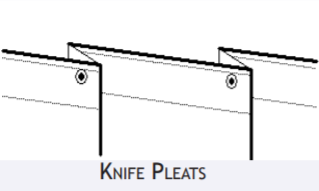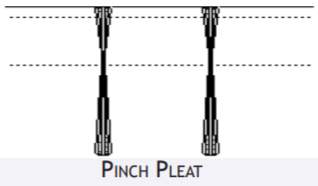Stage softgoods are used to reduce the size of the proscenium opening. Large drapes of cloth are used to frame and mask backstage areas of a stage from the spectator. Softgoods are designed for many purposes, they can be movable in different ways and sewn from a variety of fabrics. Often times the main stage drape and main valance are a chosen color while rear masking drapes are commonly black, which works well for light-absorption.
Some common softgoods include:
Drape / Curtain – used for stage masking or stage decoration.
Traveler – drapery which hang from a track which opens and closes.
Valance – drapery panel hung at the top of the stage used to mask ceiling and overhead rigging.
Leg/Wing – drapery panel hung on the side of a stage used to mask anything that is off stage.
Cyclorama – a large flat curtain that either masks the back portion of the stage or is curved in order to help create the illusion of sky.
Scrim – a specialty curtain in which the fabric used is woven with small holes in it (almost like a net). When the curtain is lit from the front it is opaque but when lit from behind the fabric becomes transparent.
Flame Retardant
Two popular materials that stage softgoods such as travelers, valances and legs are manufactured from are velours from FR Cotton and IFR Synthetics (Polyester) fabrics.
FR Cotton material are the historically used fabric and offer a classic look with a matte finish. They offer a less expensive upfront cost, but will need to be retreated for FR (flame retardant). Water can ruin FR Cotton softgoods or at least make white salt stains.
IFR (inherently flame retardant) Polyester material has properties to keep its fire retardant qualities for the lifespan of the drape and are not damaged by water. IFR Poly softgoods do have a higher upfront cost over FR Cotton, but their long flame retardancy offer a higher long term value.
All fabrics should be tested/inspected periodically for flame retardant properties. All types of fabrics should be kept clean by, at minimum, sweeping the dust out of them with a clean broom. The dust could support combustion despite the FR rating of the fabric, and it will shorten the life of the fabric. Humidity also lessens the lifespan of the FR rating, especially for the cotton fabrics.
Curtain Fullness/Pleating
Stage softgoods can be curtains that can be flat or they can have fullness. Fullness is the extra fabric used across the width or sometimes height of the drape. Fullness provides a drape with a richer look. It increases the visual depth of field and provides more light and sound absorption.
The use, look and budget can help determine how much fullness should be added to a drape. Another consideration is whether seams need to be ‘hidden’ within the pleat. Curtains that are sewn flat with a single or many widths of fabric seamed edge to edge are used for drops, cycloramas and masking.
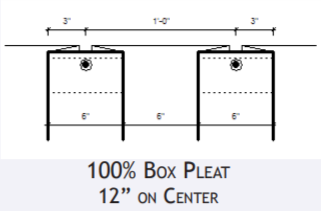
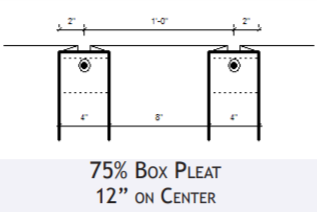
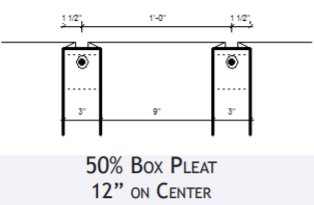
Using one and a half as many widths of the fabric used in a flat curtain yields a curtain with 50% fullness. Using 1.75 times more fabric yields 75% fullness. Two times the fabric yields 100% fullness, and three times as much fabric yields 200% fullness, commonly used for Main Curtains where a rich, full look is desired.
